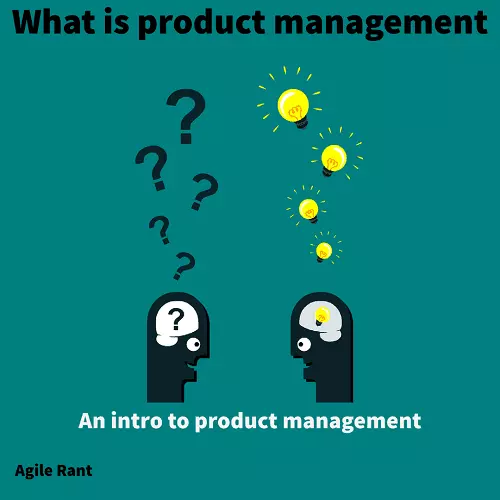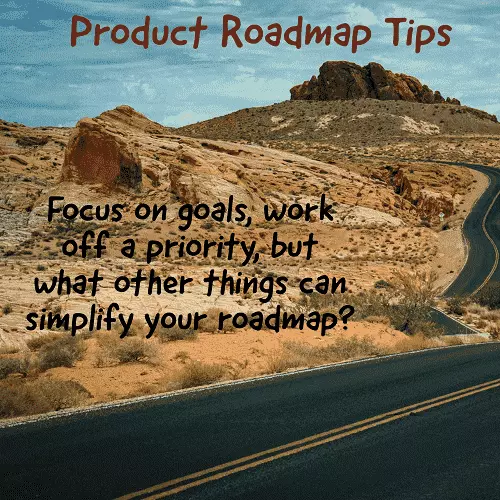
What is product management? In the dynamic landscape of today’s business world, where innovation reigns supreme, a strategic discipline emerges as the linchpin between visionary concepts and market triumph. Welcome to the realm of product management – a captivating fusion of art and science that orchestrates the creation, evolution, and delivery of products tailored to satisfy customer desires and steer enterprises toward prosperity.
As we delve into the intricate tapestry of product management, we’ll uncover the methodologies, insights, and expertise that transform abstract ideas into tangible realities, driving both customer delight and organizational achievement. Join us on this enlightening journey into the heart of product management, where innovation meets strategy, and customer needs take center stage.
Let’s dive into the overall flow, and then get into the product lifecycle and what is product management.
- What is product management – an overview of the flow
- What is product management? It starts with the research
- Dive into development and implementation
- What is product management, well there is the launch of course!
- What is product management – it includes measurement and adjustments
- Don’t forget the 4 P’s of Product Management
- Additional reading and book content to help understand what is product management
What is product management – an overview of the flow
Product lifecycle management can be broken down into these high-level areas of work. First is research, analysis and design. This is where you understand a product need and create ideas to meet the need. Second, comes the development stage. This is where you go about creating the product. The third is the implementation of the product. Implementation being the ready state of the product, but not launched. Fourth is review and launch. This is where you plan and launch the product. The fifth is the measurement of success. The last stage is where you determine the success of the product, and/or needed changes to the product. Further changes allowing you to grow the success of the product.
What is product management? It starts with the research
The first stage in the product development lifecycle is the concept development and preliminary market-research. That is a broad definition. However, the research starts from knowing your company needs and goals. Competitor research is also very helpful here. You must start to identify a target market. Or, what market segments seem like opportunities for your company. Then taking the product ideas for the company and starting the process of taking them to reality.
Developing a new product requires new product ideas! Creating and refining product concept ideas for your business. Developing a business case for those product ideas and understanding business goals to be achieved. Lastly, another piece is taking all of the research and coming up with prototypes that might be able to be tested in the market. Let’s jump into some steps along the way!
Understanding of your market via analysis and design
In order to have any successful product, you need to meet user needs and wants. The users being the customers that will pay for said product. This can be a physical product or service. In this stage, you identify what problems exist to solve, or what needs or goals can be met.
These problems and needs are opportunities for your possible product. Identifying them allows the solution, via your product, to be designed towards maximum effectiveness. Which will make the customers happy and get your product to be profitable. Identifying what will gain business value. Understanding the place of your product in the market will help you understand its potential profitability.
As part of this effort, you seek to understand what can set you apart. What will make your product different, or better than other products available. Maybe there is nothing quite like it available, but even then, it won’t last and you need to set your product apart. You may seek to set your product apart based on cost. Also, you may seek to differentiate based on features. Or maybe a combination of the 2. Solid user research of the customer-base is needed to understand these things, as well as research on other products available. Especially the products you will compete with.
Setting your product apart is often called the competitive advantage of your product. Key differences or improvements to your product, that may let you obtain more users and customers. Proper positioning to take advantage of what your product does well is key.
This also might not be in a brand new product. You might have an existing product, that you need to add to. Determining how to add or change products to set you apart, is also part of the analysis and design.
The product-marketing of a product, from research and product planning, thru actual marketing efforts, is a large swatch of work. Only touching on some of that here, by saying you will need a marketing strategy to go execute on.
Determine strategy to get where you want to go
Next up, you need to create a plan to get your product to where it needs to be. A plan to follow during the product development process. This is where you are creating the product roadmap or multiple roadmaps for varying products. Maybe multiple items that make up a product portfolio.
This is all to have a direction of the product, that ultimately meets goals. The strategy and the roadmap will guide pieces of work, like software development. Which, actual software development is a small portion of the lifecycle of products. What is product management if not creating some strategy and direction for your product.
Dive into development and implementation
This is a large phase, and really can be broken into multiple steps along the way. It contains everything from once you start creating the product, all the way to when that product is actually live and implemented. This is where you have your prioritization of product features. It is also where your software development process lives. Then the testing, and once ready, the implementation of the product.
Having a plan to get the product
What is product management, if nothing more than having a plan for the product. First and foremost, create your plan to execute work. Work that will deliver you a product to meet needs and goals.
A big question is the buy, build, or partner dilemma. You must decide if it is cost effective to build yourself. Or, maybe it is better to purchase a product to use. Another option is to partner with another company to complement your offering. It can be those, or any combination of those, to get your company the product needed. A concept to be aware of here is portfolio management. Which essentially boils down to the management of multiple products. Multiple products rolled up to be a portfolio.
A HUGE consideration is pricing. We don’t have the cap space here to give it justice. Just know this, you need to have competitive pricing. You will need to come up with pricing that makes your product attractive to customers, but also makes money. Easy right?
Understand your customer and their process to buy and use your product. This needs to happen before you create the product, which is why I mention in this stage. Some analysis to this has to happen prior. Mostly, to avoid building products that nobody wants to pay for.
Development and implementation
Whether you land on buying, building, or a partnership to obtain your product, there is development of the product required. Work to get your product into a ready and shippable state. Where it can go out to customers and start to make money. Developing new products and implementing them is a huge ask by itself, but is just a part of the overall process.
Once it is in a ready enough state, implementing the product is also a big step. This is separate from launching the product. I view these things as distinct processes. The big reason is that you need to get your product implemented, or close enough to implementation, to determine how and when you can actually launch.
Some companies and people may try to combine implementation with product launch, but I would caution against it. Because, getting a product implemented gets said product to a state where you can complete real evaluation. That real evaluation lets you see what might still be needed and let’s you actually plan around a product launch.
Determine how you will make your product known
Marketing of the product is work that has to be done. Determine how to get customers and how to keep them. Part of this is having some understanding of competing products. The other part is understanding of your own product. It’s strengths and weaknesses, and it’s ability to meet customer needs for its price point. Then ultimately leveraging that knowledge to get your product in front of the best audience potential customers. A marketing plan is needed to organize the full effort around how you will make your product known.
Don’t forget the measurement of this effort. You will need to be able to measure efforts here, so you can fine-tune and adjust. This will let you find out what efforts work well, and what efforts do not. That way you can spend your marketing dollars where they make the most impact.
What is product management, well there is the launch of course!
Determining when ready is as much art as it is science. But at some point, you have to make the call that the product is good enough, and you need to get it into the real world.
Then comes launching the product. Once all the due diligence is done and you feel ready enough, to start letting the customers, partners, and anybody you can let know. There is a whole lot to launch, so just briefly covering a few things here. Like mentioned though, the communication plan for the launch is a big focus. Who will be notified and when. What types of notifications? IE, emails and social media, actual mailings, or updates to a website, just to name some typical ways that will happen.
Don’t forget monitoring. Do you have the monitoring in place? Where you can ensure the product is meeting the standards it needs to start? Or monitoring on communications to see how they are performing.
Don’t forget sales and support
Sales and support of your product is critical. It is a primary factor in how you grow use of your product, but also how you keep users. You need to have a solid strategy and resources in place for this type of work. Including, but not limited to the following.
Knowing the sales process and how you will go about “selling” your product. Is it primarily thru the web and advertising? Do you need sales associates out there working your product to find leads and make sales? There is a lot to consider for how you will sell your product.
Then also, what materials to support sales will be needed. Literature and product features are just the beginning. You may need to customize sales material for different customer segments. That is just one amongst many ways you may customize your materials to help with sales.
Don’t forget the product support. Who will work on issues? Will there be a team in place to help with user questions and troubleshooting? What type of materials will exist for support and self service? Support is a large area, but there are some of the concerns around having that product support.
What is product management – it includes measurement and adjustments
One last idea to mention is measurement of your product. How is the product performing, both against expected criteria and unexpected criteria. I say both of those, as new things will be learned that you will want to measure your product with. The understanding of this performance is a primary factor in adjustments made to your product. What changes will you make? How will you add or update the product to better meet customer needs. Thus becoming more profitable along the way.
That is the product life cycle. There you have it, easy right? Of course not, but just remember that its a process based on trial and error. That is why measurement of success, or lack thereof, is so important. It is also an iterative process, where you can tweak and improve ideas. You just need a solid product idea to start, and then the rest can be worked towards.
Don’t forget the 4 P’s of Product Management
The 4 P’s of product management represent a fundamental framework that guides product managers in effectively designing, developing, and delivering successful products to the market. This framework, borrowed from the world of marketing, has been adapted to the realm of product management to encapsulate key strategic elements that contribute to a product’s overall success.
Product
At the heart of the framework lies the product itself. This encompasses everything from its features, functionalities, and design to its unique value proposition. Product managers need to deeply understand the needs and desires of their target audience to shape the product in a way that resonates with them. This involves making decisions on the core features, prioritizing enhancements, and ensuring the product aligns with the company’s overall vision and goals.
Price
Price refers not only to the monetary value assigned to the product but also to the perceived worth it holds for customers. Product managers need to consider factors such as market demand, competition, production costs, and the value the product brings to customers. Pricing strategies can range from premium pricing for high-value products to penetration pricing to capture a larger market share. Finding the right balance between price and value is essential to drive customer adoption and financial success.
Place
Place relates to the distribution and accessibility of the product. It involves determining where and how the product will be available to customers. This could include choosing the right sales channels, deciding whether to sell through physical stores or online platforms, and considering factors such as geographic reach and convenience. A well-thought-out place strategy ensures that the product reaches the target audience efficiently and effectively.
Promotion
Promotion entails the strategies used to create awareness, generate interest, and encourage purchase of the product. It encompasses marketing and communication efforts such as advertising, public relations, social media campaigns, and more. Product managers must tailor their promotion strategies to resonate with their target audience and effectively convey the product’s value proposition. A successful promotion strategy can significantly impact a product’s visibility and adoption rate.
The 4 P’s of product management serve as a comprehensive framework that helps product managers navigate the complexities of bringing a product to market. By carefully considering each element—product, price, place, and promotion—product managers can make informed decisions that optimize the chances of product success. This framework encourages a holistic approach to product management, ensuring that products are not only well-designed but also effectively positioned, priced, and promoted to meet customer needs and achieve business objectives.
Additional reading and book content to help understand what is product management

A great read from Atlassian on What is Product Management.
